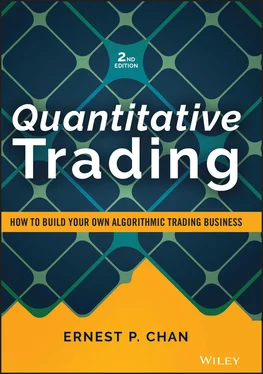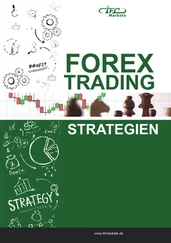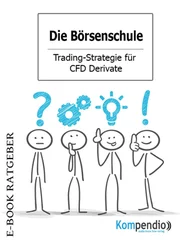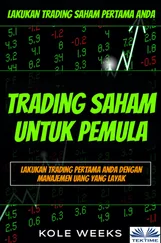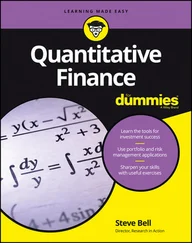Given these preambles, I won't make any further apologies in the rest of the book in focusing on the entrepreneurial, independent traders and how they can build a quantitative trading business on their own, while hoping that many of the lessons would be useful on their way to institutional money management as well.
WHAT KIND OF BACKGROUND DO YOU NEED?
Despite the scary-sounding title, you don't need to be a math or computer whiz in order to use this book as a guide to start trading quantitatively. Yes, you do need to possess some basic knowledge of statistics, such as how to calculate averages, standard deviations, or how to fit a straight line through a set of data points. Yes, you also need to have some basic familiarity with Excel. But what you don't need is any advanced knowledge of stochastic calculus, neural networks, or other impressive-sounding techniques.
Though it is true that you can make millions with nothing more than Excel, it is also true that there are tools that, if you are proficient with them, will enable you to backtest trading strategies much more efficiently, and may also allow you to retrieve and process data much more easily than you otherwise can. Best among these tools are MATLAB, Python, and R, and they are the most common research platforms that many institutional quantitative strategists and portfolio managers use. Therefore, I will demonstrate how to backtest the majority of strategies using all three languages. In fact, I have included a brief tutorial in the appendix on how to do some basic programming in MATLAB, which is my favorite among the three. For a tutorial on how to use R for finance, I recommend Regenstein (2018). For Python, I like the book by the inventor of its Pandas package, McKinney (2017). MATLAB for home use costs about as much as Microsoft Office, while Python and R are free.
WHAT WILL YOU FIND IN THIS BOOK?
This book is definitely not designed as an encyclopedia of quantitative trading techniques or terminologies. It will not even be about specific profitable strategies (although you can refine the few example strategies embedded here to make them quite profitable). Instead, this is a book that teaches you how to find a profitable strategy yourself. It teaches you the characteristics of a good strategy, how to refine and backtest a strategy to ensure that it has good historical performance, and, more importantly, to ensure that it will remain profitable in the future. It teaches you a systematic way to scale up or wind down your strategies depending on their real-life profitability. It teaches you some of the nuts and bolts of implementing an automated execution system in your own home. Finally, it teaches you some basics of risk management, which is critical if you want to survive over the long term, and also some psychological pitfalls to avoid if you want an enjoyable (and not just profitable) life as a trader.
Even though the basic techniques for finding a good strategy should work for any tradable securities, I have focused my examples on an area of trading I personally know best: statistical arbitrage trading in stocks. While I discuss sources of historical data on stocks, futures, and foreign currencies in the chapter on backtesting, I did not include options because those are quite complicated to backtest for someone new to algorithmic trading. If you are really keen on learning that, please read Chan (2017).
The book is organized roughly in the order of the steps that traders need to undertake to set up their quantitative trading business. These steps begin at finding a viable trading strategy ( Chapter 2), then backtesting the strategy to ensure that it at least has good historical performance ( Chapter 3), setting up the business and technological infrastructure ( Chapter 4), building an automated trading system to execute your strategy ( Chapter 5), and managing the money and risks involved in holding positions generated by this strategy ( Chapter 6). I will then describe in Chapter 7a number of important advanced concepts with which most professional quantitative traders are familiar, and finally conclude in Chapter 8with reflections on how independent traders can find their niche and how they can grow their business. I have also included an appendix that contains a tutorial on using MATLAB.
You'll see two different types of boxed material in this book:
Sidebars containing an elaboration or illustration of a concept
Examples, accompanied by Excel (for some), MATLAB, Python, and R codes (for all)
Readers who want to learn more and keep up to date with the latest news, ideas, and trends in quantitative trading are welcome to visit my blog predictnow.ai/blog, where I will do my best to answer their questions. You will find that the website contains articles and presentations of many aspects of quantitative trading. Readers of this book will have free access to the software codes contained in this book located at epchan.com/bookand will find the password in a later chapter to enter that website.
—Ernest P. Chan
October 2020
1 Economist . 2019. “March of the Machines. The stockmarket is now run by computers, algorithms, and passive managers.” October 5. www.economist.com/briefing/2019/10/05/the-stockmarket-is-now-run-by-computers-algorithms-and-passive-managers.
2 Lux, Hal. 2000. “The Secret World of Jim Simons.” Institutional Investor Magazine, November 1.
3 Poundstone, William. 2005. Fortune's Formula. New York: Hill and Wang.
For the second edition, I would like to thank Ben Xie, Long Le, Roger Hunter, Tho Du, and Zachary David for their help with Python and R. A big thank you also to my production editor, Purvi Patel, for shepherding this project to its fruition.
I thank Dr. Sergei Belov and Dr. Radu Ciobanu for demonstrating a novel machine-learning technique that we called Conditional Parameter Optimization in Example 7.1, and updating Example 7.4 with his high-performance PCA codes. Radu was the VP of Engineering at PredictNow.ai, our financial machine-learning SaaS, and Sergei is a senior researcher there.
Last but not least, I would like to thank all the readers who wrote me over the years since the publication of the first edition with their questions and doubts, about bugs in the book, and on how they finally achieved success in this ultracompetitive world of quant trading.
CHAPTER 1 The Whats, Whos, and Whys of Quantitative Trading
If you are curious enough to pick up this book, you probably have already heard of quantitative trading. But even for readers who learned about this kind of trading from the mainstream media before, it is worth clearing up some common misconceptions.
Quantitative trading, also known as algorithmic trading, is the trading of securities based strictly on the buy/sell decisions of computer algorithms. The computer algorithms are designed and perhaps programmed by the traders themselves, based on the historical performance of the encoded strategy tested against historical financial data.
Is quantitative trading just a fancy name for technical analysis, then? Granted, a strategy based on technical analysis can be part of a quantitative trading system if it can be fully encoded as computer programs. However, not all technical analysis can be regarded as quantitative trading. For example, certain chartist techniques such as “look for the formation of a head and shoulders pattern” might not be included in a quantitative trader's arsenal because they are quite subjective and may not be quantifiable.
Yet quantitative trading includes more than just technical analysis. Many quantitative trading systems incorporate fundamental data in their inputs: numbers such as revenue, cash flow, debt-to-equity ratio, and others. After all, fundamental data are nothing but numbers, and computers can certainly crunch any numbers that are fed into them! When it comes to judging the current financial performance of a company compared to its peers or compared to its historical performance, the computer is often just as good as human financial analysts—and the computer can watch thousands of such companies all at once. Some advanced quantitative systems can even incorporate news events as inputs: Nowadays, it is possible to use a computer to parse and understand the news report. (After all, I used to be a researcher in this very field at IBM, working on computer systems that can understand approximately what a document is about.)
Читать дальше
